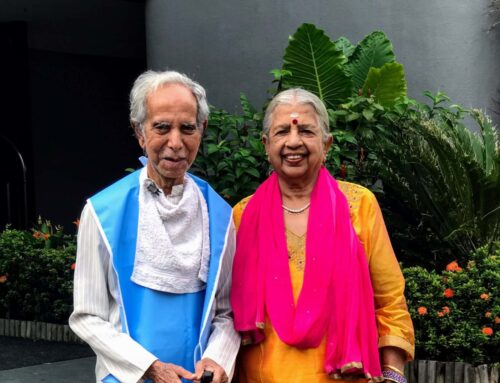Tourists appreciate bedside manners and smart service
So where did you go for New Year’s? For much of Asia and indeed the world, it would have been the Middle East. According to a report by Deloitte entitled Hospitality 2015: Game Changers or Spectators, the Middle East has much to gain from emerging trends in the travel and tourism sector, thanks to 150 million new travellers from India and China and a continued expansion of the highly lauded Middle Eastern airlines such as Etihad Airways, Emirates Airline and Qatar Airways.
The Gulf states, particularly Saudi Arabia, Qatar and the UAE, have invested a lot in tourism, yet they lag behind in the list of nations that score highly in attracting tourists. France, with 75 million international arrivals, is number one, followed by the US, Spain, China, Italy and the UK. In the Middle East, Egypt and Saudi Arabia come out on top, not counting Turkey, which ranks seventh in the top tourism nations. Deloitte’s report argues that all this is about to change and lists six factors that can tilt the odds: demographics, talent, technology, brand, sustainability and crisis management.
In short, this is what the report says: those in the hospitality industry who can manage their brands effectively and ride the trends of social networking and sustainability can take advantage of the two key “demographic drivers” of the tourist economy – the ageing baby boomers and emerging middle classes of India and China.
Tourism has bounced back to “pre-crisis levels”, according to the latest issue of the World Tourism Barometer, put out by the UN World Tourism Organisation in Madrid.
“As on previous occasions such as the 9/11 attacks of 2001 and the SARS outbreak of 2003, tourism has once again shown a strong capacity for recovery (after the global economic crisis of 2008),” says the report. After a depressed 2009, tourism figures are up 5 to 6 per cent across the board. The Middle East was up 16 per cent last year, although, the report cautions, “this was on a very depressed first eight months in 2009”.
But here’s the thing. It’s all very well to welcome 50 million tourists, but you also need the staff to manage them. Simply putting up a brilliantly bejewelled Christmas tree as Emirates Palace hotel recently did is not enough. Given this context, staff attrition in the hospitality industry is a huge problem. According to the Deloitte report, an average hotelier spends 33 per cent of revenue on labour costs, but employee turnover in the industry is as high as 31 per cent.
Hotels have come up with different strategies to manage employee attrition. A manager at the Fairmont Beijing told me that his company used a proprietary questionnaire to match employees and jobs.
“Say you have an untidy table and allow three candidates to walk past. There will usually be one candidate who cannot bear to see the mess. He or she will, quite literally, be forced to rearrange the objects on the table into a semblance of order. That’s the candidate you want in housekeeping,” the manager said, explaining the logic behind matching employee to job.
I have a much simpler model. It is called self-monitoring. Anyone who works in the hospitality industry, or any service business for that matter, has to be good in self-monitoring. Why are some waiters consistently given higher tips? Why are some guest services staff consistently given positive feedback from guests? According to the psychologist Mark Snyder, it is because they are highly adept at “self-monitoring”. They have the ability to adapt behaviour according to situation and person.
Good politicians do this instinctively. Good waiters know when to be chatty with diners, and when the people who are seated simply want to be left alone. Self-monitoring individuals, as Wikipedia points out, are highly responsive to social cues and situational context.
In 1974, Mr Snyder developed a self-monitoring scale that measured three important attributes that made a person good at this: acting, extroversion and other-directedness. Human resources personnel should train themselves to spot these three characteristics, if nothing else, when they select employees in the hospitality business.
The same goes for hotel managers. When a guest walks into the hotel, can your employees tell if he has had a bad day and doesn’t want the cheery greeting and chirpy chit-chat? Well, if they are good at self-monitoring, they will instinctively know how the guest is feeling and adapt their behaviour to suit his or her mood.
This is especially key in the medical tourism business. The Gulf states are fashioning themselves to attract the 1.6 million Americans going abroad for everything from plastic surgery to hip replacement. So far Thailand, Costa Rica and India are attracting medical tourists who are attracted by their warm climes and warm people.
But the UAE’s gleaming hospitals and world-class partnerships, including a branch of the famed Cleveland Clinic, currently being constructed in Abu Dhabi, will serve to attract medical tourists to the region as well.
The cost of healthcare in the UAE is high relative to Asia. Cutting costs may help. Harder still is infusing nurses and physicians in the UAE with the sort of warmth and graciousness that comes naturally to employees at hotels and resorts. Doctors at hospitals serving medical tourists cannot afford to simply stare at a patient chart and mumble a prescription. They have to be taught to monitor their response according to the culture and personality of the patient. Swiss patients may be satisfied with a formal greeting followed by a medical discussion. American patients, on the other hand, tend to be chatty and informal. Can a preoccupied and busy nurse or doctor monitor his or her behaviour to suit multiple nationalities and personalities?
In it lies the success of medical, and for that matter, other tourism in the UAE.
Shoba Narayan is a journalist based in Bangalore and the author ofMonsoon Diary





Leave A Comment